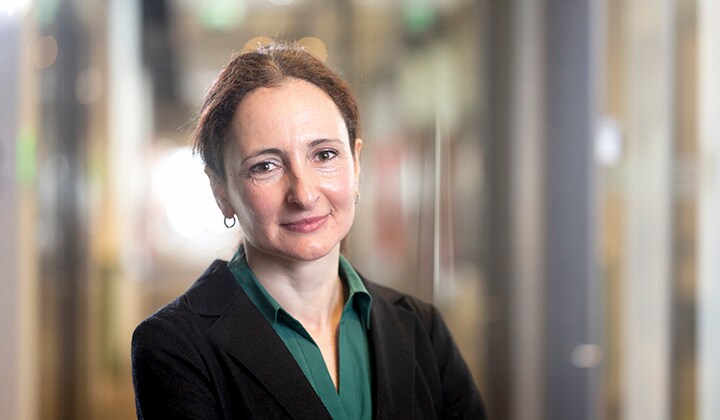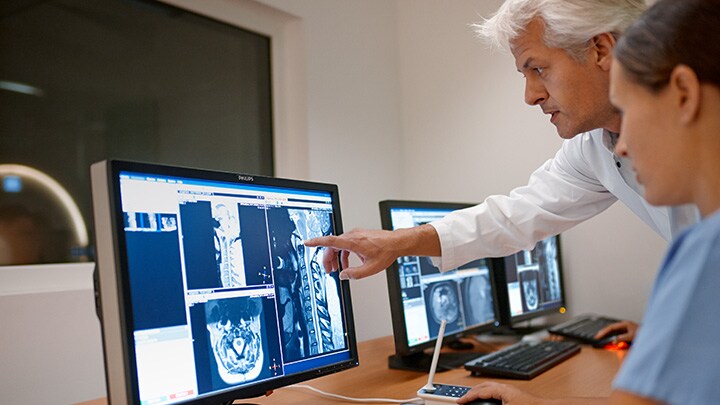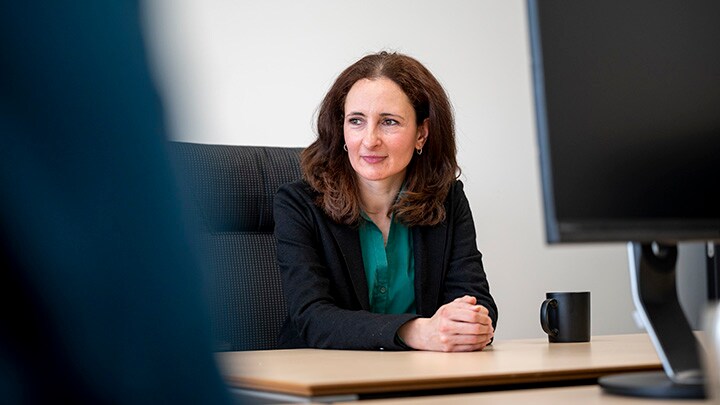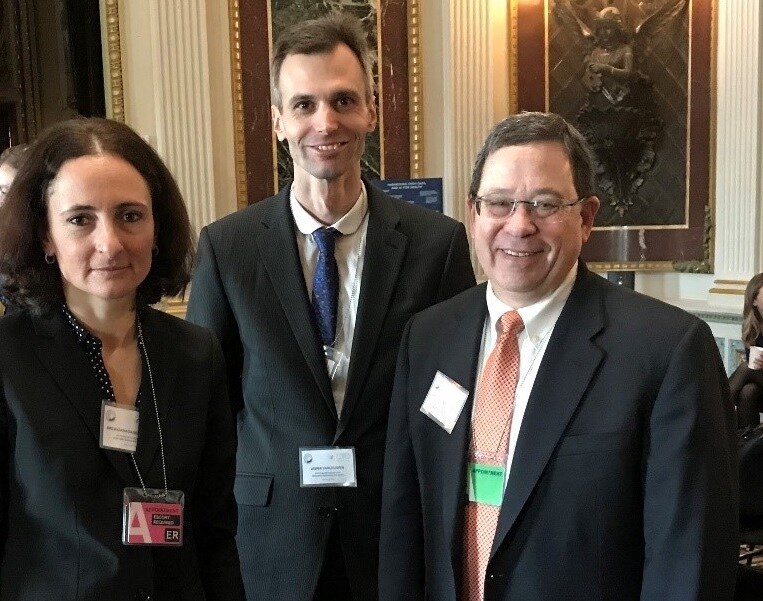Interview
Share on social media
"We were the only European team invited to present at an AI event in the US White House"
Turning data and artificial intelligence from a promise to an actual, tangible clinical benefit; that, in a nutshell, is the mission of Anca Bucur. Originally she started doing that within Philips as a computer scientist, but gradually her role expanded to that of an inventor, entrepreneur and external expert for the European Commission.
It even secured her a ticket at a hackathon at the White House.
Artificial intelligence (AI) is considered as one of the most promising technologies in healthcare and other industries. When did your fascination for it start?
“Long before it was this popular, I would say. Shortly after I joined Philips in 2003, machine learning and semantic reasoning were two of my focus areas. Today, fortunately, people have become much more aware of the true potential of this technology, as it evolved, grew and matured.”
“In my work, I help colleagues in research and business to realize that potential. Together we look at how we might be able to further improve our products with the help of AI, to add tangible benefits for our customers. Currently I work on Next Gen AI topics, which are key enablers for the Philips global Data and AI Centre of Excellence. We are helping to scale AI adoption across all Philips business clusters.”

Where do you think the biggest opportunities are?
“We are already using AI in several areas, like generating faster and better MRI images, predicting when a system needs maintenance and detecting sleep patterns for example. I would say that the big opportunity is to think big. We can take small steps every day to improve our technology bit by bit, and this is good, but I always like to challenge myself and others to dream big. What can we do in 5 or 10 years? And what do we need to do today to make that happen?”
I like to challenge myself and others to dream big. What can we do in 5 or 10 years? And what do we need to do today to make that happen?
Anca Bucur
Data & AI Scientist
“This is also something that I hear a lot from clinicians that partner with us in innovation, they all have in common that they want to change the world with better healthcare technology. They expect us as a medical technology company to think big as well, to have a clear picture of the future of healthcare and to act on it to make it happen. To be able to play a role in this, that is what gives me most satisfaction.”

It sounds like you work both on technology, while at the same time collaborating with colleagues and clinicians to make innovation a reality. Which one do you like most?
“By now, I don’t think one can go without the other. I think my role has gradually expanded from computer scientist by gathering in-depth clinical knowledge and to entrepreneur. In 2017 I got the opportunity to create a new proposition within Philips, called Cohort Builder. It felt like starting a company within Philips. Together with my team, we were given the time and resources to create an entirely new offering.”
“We developed a technology that helps hospitals to use existing data for clinical research, in the most efficient way. This is a big challenge for most hospitals. You must imagine that hospitals do a lot of research to understand and improve the outcomes of their patients and run multiple clinical trials each year, for example to see if a new treatment works. If every researcher needs to gather patient data on their own, out of scattered and heterogeneous sources, that is very inefficient.”
We developed a technology that helps hospitals to use existing data for clinical research, in the most efficient way. This is a big challenge for most hospitals.
Anca Bucur
Data & AI Scientist
“Cohort Builder, as the name says, is a technology that can help to select cohorts, for instance groups of patients with certain characteristics, out of large data repositories. This helps clinical users to quickly and intuitively explore existing datasets, instead of having to gather or search for new patient data for each new research question.”

“This adventure did open some interesting doors. In 2019 our team was selected to participate in a tech sprint that led up to a final presentation in the White House; the idea was to have teams look at innovative ways to address challenging issues around patient recruitment in clinical trials. We were the only European team there, and we joined clinical experts, patient advocates, US government agencies, and health tech companies. That was truly a unique experience, and also an opportunity to showcase that Philips is in the forefront of innovation in this field.”

Recently you won an Invention Award for your contribution to Philips Research. Which patents are you most proud of?
“I find the highest impact in several patents that support our current strategy in data and AI. These are patents related to federated identity management, heterogeneous trust environments, ground truth creation and validation. Even though they were created years ago, they are relevant for our company in scaling up AI.”
Within Philips, every day thousands of inventors work on tomorrow’s technologies. What drives them? How do they come up with their ideas and how do they successfully bring them to market? In the Impactful Inventors series, we will answer these questions.
Also read:
Henk van Houten, Chief Technology Officer: "Invention Awards winners are the heroes of Philips Research"
Mark Johnson, the man of hundreds of patents: "There is no training to become an inventor"
